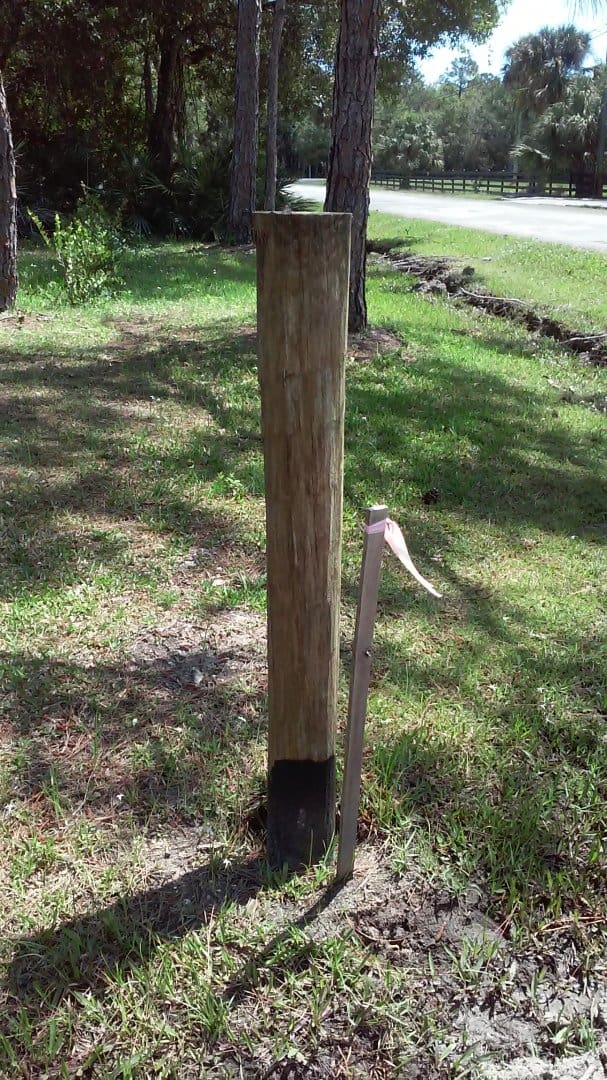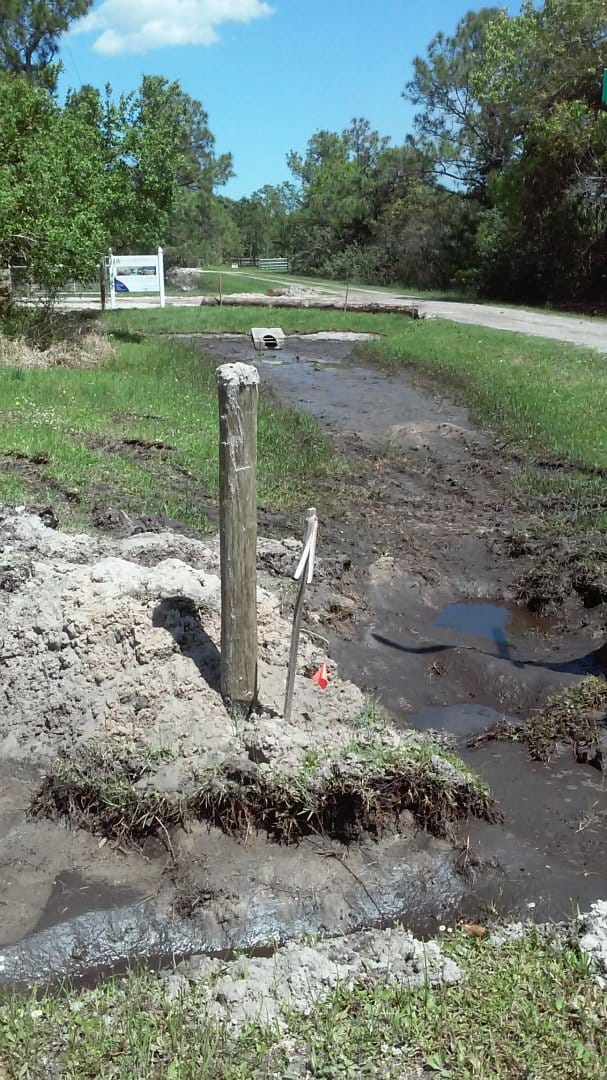Time for a dictionary break
phallic /èöfÌ?l»k/
adjective
designating personality traits, such as conceit and self-assurance, due to fixation at the phallic stage of development-- Compare anal
anal /èöe»nªl/
adjective
designating personality traits in the adult, such as orderliness, meanness, stubbornness, etc, due to fixation at the anal stage of development.
surveyor
see above
If a person starts to actually look at how plumb most corner posts of barbed wire fences are after the fence has been in place for a few years, they may be in for a surprise if they are thinking that corner posts are carefully plumbed up and remain so. For the record, railroad tie fence posts are even more of a PITA to locate than pipe posts are (and very seldom are so plumb that the top of the post can be located for the center of the post at grade).
Jobo would have put his hat on the fence post and made sure the plumb bob string over the "true corner" was at least close to brushing the brim.
A boundary line is a foot wide. Amazing how people (other than surveyors) relax when I explain that.
If we find not-more-than-half-a-foot discrepancy between a called-for monument and where we'd mark it ourselves, love thy neighbor already.
Stuff moves. Even durable stuff. Frost heaves. Black mud. Etc. We have not-much-more control over a "durable survey mark" than we do over the post itself.
I've put nails in washers in the top of the post as directed by the boss.
I've also had owners or adjoiners yell at me for putting a nail in the top of the post where the rain will now penetrate and rot the post faster.
Not sure what I'd do today to mark it. Ask the client first. Thinking about making a post cap monument. Maybe epoxy a washer to the top or the side of the post. On the top I reckon we'd be expecting a dimple as to the precise dimple-size point, whereas glued to the post somewhere might imply "the whole post is the monument." I hardly ever see posts larger than a foot in diameter. Gotta get more farm jobs I guess.
Something one of my favorite mentors explained to me once about pincushions and technology:
Back in the "old days" of a transit and chain and plumb bobs, the general assumption was that error compounded by about a tenth of a foot per setup from entering error with plumb bobs, steel tape error due to temperature, tension, and catenary, leveling error of the old non-compensated transits, etc. I was already deep into least squares and free stationing and trig leveling and I was less than impressed by some of the historical measurements and closures we were retracing, also less than impressed on the days I went out as a rodman with some very old-school urban lot surveyors and saw that they were directly occupying the closest monuments to the job and trying very hard to avoid setting "work points" that were not monuments, to the extent of setting rear corners shooting over the top of a house with a 25' tall rod.
When my mentor told me about that tenth-per-setup, suddenly it made a lot more sense. If you're three monuments away from the POB to get to the job site, there 's only two more setups left before your error ellipses are greater than the half-a-foot acceptance radius. No wonder the old timers sweated all day and drank all night.
One of my other mentors reminded me of this often, asking, "are we trying for a perfect retracement of an imperfect original?" He was emphasizing the difference between the measurements in the deed ("the office of the deed is to help find the physical monuments") and how the original surveyor might have set the original stakes with a rag tape and a compass. Yet another distinction that mentor made was of running in control from plat monuments that were on their third perpetuation due to improvements, only to find original iron pipes "off" with respect to the perpetuated control mons and yet "on" compared to the rest of the block.
Kent McMillan, post: 365716, member: 3 wrote: So, in other words, if a particular fence posting leaning out of plumb is to be used as a boundary monument, a professional surveyor should:
(a) identify posterity where on the post the corner supposedly marked by the post is located, and
(b) provide some means for some other surveyor fifty years from now to be able to know with some confidence whether or not the post he or she finds in place is the same post that is described in the agreement that established the corner of the lot and turned some part of some post into a boundary monument?
(a) Yes
(b) Yes
I would treat "monuments" in the same manner... consider original location, etc. leaning monuments happen, as well as rotted posts, or only a rust stain in the ground/soil/sand where a "proper monument" once was.
methods vary depending on the circumstance... maps, measurements, field notes, reference monuments, etc.
I have witnessed rural boundary legal squabble over inches or less in a fence. To the point that cross section of the fence posts has to be shown showing the boundary. Lawyers loved it.
Robert Hill, post: 365763, member: 378 wrote: I have witnessed rural boundary legal squabble over inches or less in a fence.
Yes, the assumption that boundaries can't really matter in any more than an approximate +/0.75 ft. sense is one that isn't borne out by experience. Most boundary disputes begin with personality clashes and continue as technical issues merely become the vehicle by which the parties hope to have some judge or jury tell the other combatant that he or she is wrong and, with any luck, a bad person. From a surveying standpoint, the fewer technical issues, the better. Arguing about where on or in a fence post a corner is located is needlessly nutty overhead that can be prevented.
I saw these today, and it made me chuckle. This lot had been freshly surveyed about 3 months ago by another company. We have a project going on down the street. Looks like their boundary corners are now .67 wood posts.... Notice the base of the posts. They waterproofed them to protect from the elements.
Kent McMillan, post: 365779, member: 3 wrote: Most boundary disputes begin with personality clashes and continue as technical issues merely become the vehicle by which the parties hope to have some judge or jury tell the other combatant that he or she is wrong and, with any luck, a bad person.
I love it.
From a surveying standpoint, the fewer technical issues, the better. Arguing about where on or in a fence post a corner is located is needlessly nutty overhead that can be prevented.
There shouldn't be anything to argue about in this statement.





